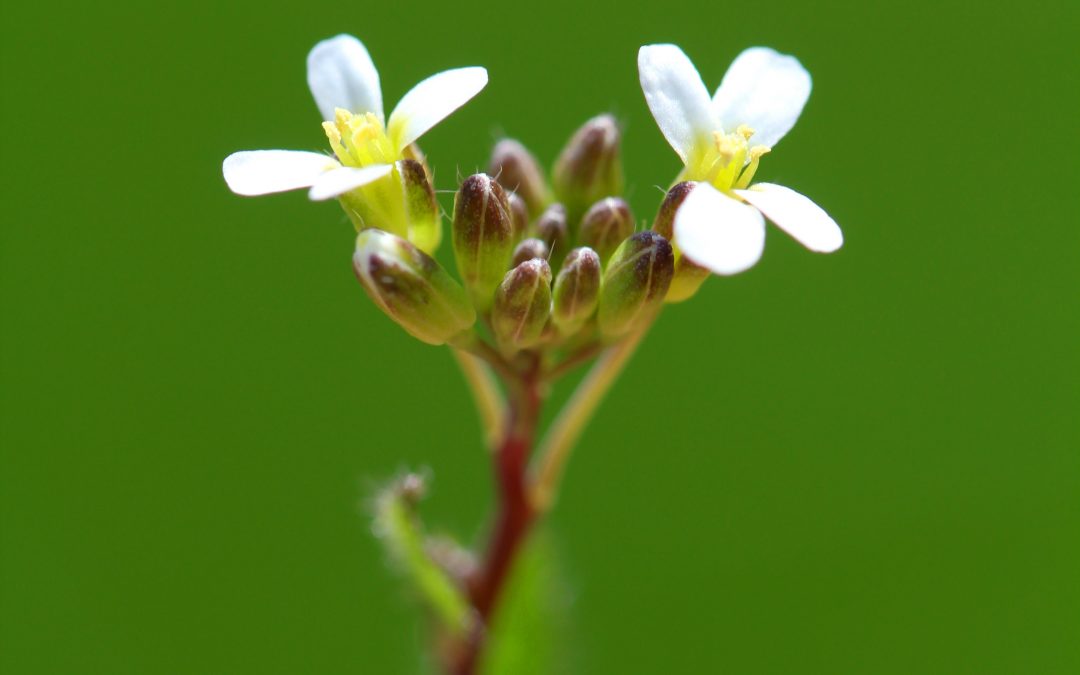Studying the effects that the vibrations from sound waves have on plants is not a new area of science. For decades, scientists have been studying the effects of music on the growth and germination of various plants. Some studies show a correlation with plant growth and exposure to music, while some studies show that there is no correlation. Whether or not music influences the development of plants, music has such a wide range of vibration frequencies and amplitudes that it is not a useful stimulus for designing detailed experiments. For a better understanding of how plants respond to vibratory stimuli, a different approach was necessary.
Many of these past studies were focused on how plants responded to human-related sounds and vibrations. However, this doesn’t help us understand how plants process vibrations within their habitat. In recent years, scientists have started to look at how plants may respond to vibrations in nature. One of the questions scientists have been considering is this: can plants distinguish between vibrations that would be dangerous, such as the chewing of herbivorous insects, and vibrations that are harmless, like the blowing of the wind? This is what a 2014 study from the University of Missouri attempted to find out.
The study took recordings of vibrations from feeding Pieris rapae caterpillars, and used actuators to expose the leaves of Arabidopsis thaliana to the vibrations. They also exposed the leaves to vibrations recorded from blowing winds and the mating calls of leafhoppers (a non-herbivorous insect that poses no danger to the plant). These exposures were designed to prime the plants to the stimulus and see if this priming caused them to generate defensive chemicals in a Pavlovian response. While they did not see any pre-emptive generation of chemicals in the tests, when the plants that had been primed with the caterpillar vibration were later exposed to caterpillars that were allowed to feed on the leaves, they were able to create more chemicals than plants that had not received any priming. Additionally, the plants that had been primed with either the wind or leafhopper vibrations didn’t generate any more chemicals than the non-primed controls.
These results imply that Arabidopsis can distinguish the differences between different vibrations and know which types of vibrations signal the possibility of herbivores in the area. They can then use this prior information to be able to respond more rapidly when the threat arrives. This is interesting, since mechanical vibrations travel very fast (10-100 m/s) and could be used as a type of early-warning alarm in plant systems, since mechanical vibrations are able to travel through connecting root and stem systems. The scientists expect that future research in this area would be designed to understand how these vibrations interact with other signal-response systems in plants to generate various responses to herbivory.
Powers Scientific offers several different options when it comes to running experiments with plants. If your work involves micropropagation of Arabidopsis or other plant species, our Plant Tissue Culture Chambers were designed with you in mind. These chambers come with four slide out shelves, with low velocity conditioned air delivered uniformly under each shelf. There are six fixed lamp positions over each shelf to deliver high intensity visible light, visible/black light combinations, or other light combinations that can be stepped on/off. The chambers can be run at temperatures as low as 7°C with lights on (for vernalization studies). It is also capable of functioning as an incubator, reaching temperatures of 40°C or higher, if needed.
If your work involves more traditional plant growth through seed germination, our Diurnal Plant Growth/Seed Germination Chambers are a great choice. These chambers offer digitally controlled temperature and lighting, with day/night cycles to simulate the nurturing environment seeds and plants need for successful growth, with a temperature range of 2-50°C. For plants or experiments with more rigorous requirements, many options can be selected, such as additional lights (vertically, horizontally, or both), installing a fresh air intake, including additive RH generation, or adding horizontal air flow ducts for better temperature uniformity under the lights.
For more information or to request a quote, visit our Contact Us page or call us at (800) 998-0500.

